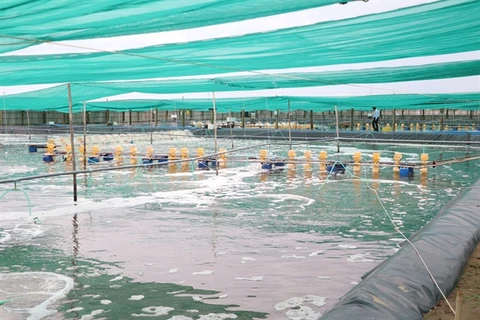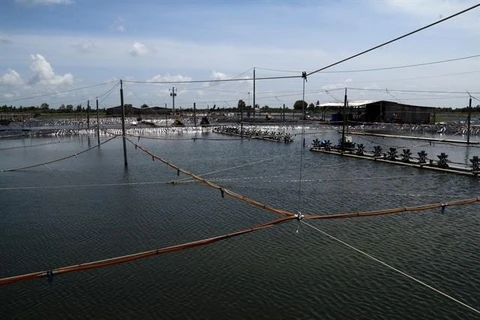 Breeding ba khia (Sesarma mederi), a mangrove crab species in a mangrove forest in An Bien District’s Nam Thai Commune in Kien Giang Province. (Photo: VNA)
Breeding ba khia (Sesarma mederi), a mangrove crab species in a mangrove forest in An Bien District’s Nam Thai Commune in Kien Giang Province. (Photo: VNA) Kien Giang (VNS/VNA) - Breeding aquatic species in mangrove forests in Kien Giang province’s An Bien and An Minh districts has increased the income of households that have been allocated forestland.
The Mekong Delta province has allocated forest land in the two coastal districts for organisations and households to protect and manage.
Nguyen Viet Binh, deputy chairman of the An Bien People’s Committee, said that households had earned their main livelihood from catching fish, shrimp and other aquatic species.
However, the quantity of aquatic species in the wild had declined and forest-allocated households had faced difficult lives and the protection of allocated forests, he said.
To protect the allocated forests, the province’s People’s Committee in 2011 decided to allow organisations and households to use 30 percent of the allocated forest land to breed aquatic species and grow other crops, while 70 percent of the allocated forest land must be used to grow forests.
The province provided soft loans and farming techniques for forest-allocated households to breed aquatic species.
Nguyen Van Doi, who was allocated forest land in An Bien’s Nam Thai commune in 1992, said the province’s Fisheries and Agriculture Extension Centre taught him how to breed aquatic species together, including shrimp, crab, blood cockles and fish. This helped him escape poverty.
Households breeding aquatic species in mangrove forests do not need to feed because the species eat natural food.
According to Le Ngoc Tung, deputy chairman of the An Minh People’s Committee, the district has 726 households allocated forest land for protection. Each household is allocated between 1 – 7 hectares of forest land and is allowed to use 30 percent of the allocated forest land to breed aquatic species.
Households who breed blood cockles in mangrove forests can earn a profit of 70 – 160 million VND (3,000 – 6,900 USD) per hectare a year, he said.
Besides breeding aquatic species in mangrove forests, households in An Minh also breed clams and other bivalve mollusks in 6,300ha of mud flats.
The coastal mangrove forests of An Bien and An Minh have a length of 61km and cover more than 4,000ha, including the buffer forest area and the core forest area. The buffer forest area accounts for nearly 3,000ha where spotted mangrove is grown, while the main forest area has mostly grey mangrove./.
VNA





















